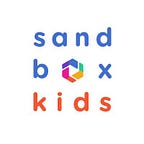A Beginner’s Guide to Understanding Phonics
What is phonics?
Phonics is a widely used method used in early years and primary education to teach children how to read and write. It helps kids understand the relationship between letters and sounds and how they are formed.
How does it work?
When children learn that the letter A has the speech sound of /a/ as in ‘ant’ or the letters CH together have the sound /ch/ as in ‘chair’, they are learning phonics.
Phonics in the English language
The English language can be broken down to 44 sounds that together form all our words. The smallest unit of sound is called a Phoneme and is represented by one letter of the alphabet like the example /a/ above. Letters of the alphabet are also called Graphemes. In the English alphabet there are only 26 letters (or Graphemes) so groups of letters have to be combined to make the rest of the sounds. Digraphs are 2 letters making one sound like /sh/ in ‘ship’ or /ay/ in ‘play’. Trigraphs are 3 letters making one sound like /igh/ in ‘high’ or /ear/ in ‘bear’.
Why is it important?
Research shows that teaching phonics is the most effective way children can be taught to read. Most schools now introduce children to phonics in Reception or Kindergarten and they will continue to learn it throughout Key Stage 1/Grades 1&2 until they can read with confidence and fluency. Mastering phonics early on will allow kids to pick up reading quickly and develop a passion for books.
How to teach phonics?
Start by focusing on the sounds of the letters rather than the letter names, don’t worry if your little one starts calling letters by the sounds they make rather than their ABC names. At first kids will learn the sounds, then how to match them to letters and then how to blend the letter sounds together to form simple words like ‘cat’. Blending means that they are reading individual sounds with increasing speed until you can hear a word. At the same time children will also work on segmenting; separating whole words into individual sounds. The two will work hand in hand.
Why start early?
Developing early literacy skills at home will help get your kids ready for learning phonics. The easiest place to start is by simply making time to read aloud to your kids; reading aloud is the most important thing parents can do as it gets kids excited about learning to read for themselves.
Get started
When your child is ready, you can start to introduce them to letters and sounds. Why not encourage them to play with letters at home and get them excited to find the letters and sounds in their own names? You can also try some fun games that involve listening and recognising sounds and the differences between them.
Fun game you can try
Sound Eye Spy: ‘I am thinking of something that begins with the sound _. What other things begin with that sound?’. Our game Alphabet Hotel has all these sounds correctly pronounced for you.
Tips & advice
Pronunciation of the sounds is often what confuses many parents as it might be different to what you remember. Just try to make sure that you and your child pronounce the sounds precisely, using the pure sound (for example mmmmmm not muh, ffffffff not fuh) so you can hear each individual sound clearly.
A word of caution: Remember that NOT all words can be sounded out phonetically e.g. ‘the’, ‘what’ or ‘he’. These are often called tricky words or High frequency words and children will simply learn to recognise them as they develop their literacy skills.
How Hopster can help:
GAME: Alphabet Hotel (Available in our app only)
We have made a brilliant literacy based game called Alphabet Hotel. This game will allow kids to explore all the letters and sounds of the alphabet, as well as digraph combinations. Through playing a series of mini games they will learn to recognise the sounds and corresponding letters, as well as matching objects beginning with the same sounds.
TV SERIES: Alphablocks
(Available: Worldwide except Israel, China, Africa & UK)
Alphablocks is a fun educational show designed to teach children how to spell. Through fun songs and stories, the 26 living letters teach kids how to form words using the letters of the alphabet. It is a great way of introducing little ones to phonics and helping them recognise the letters of the alphabet and associated sounds.
ABOUT LELIA INGRAM
Hello, my name is Lelia — I’m Hopster’s Head of Learning. I have over 15 years’ experience in teaching, across the Early Years, Key Stage 1 and 2 and as an Assistant Head Teacher. I specialise in literacy with a focus on developing teaching and learning within the Early Years and Key Stage 1. For me, working alongside Hopster is a perfect opportunity to be involved in developing specialist technology that delivers education in a fun and entertaining way.
